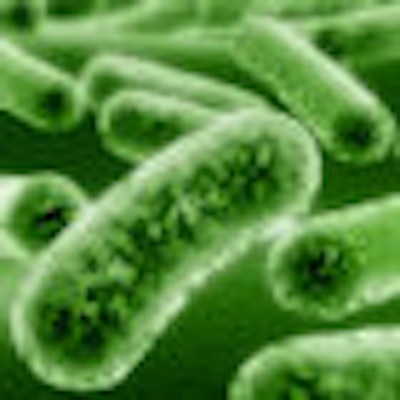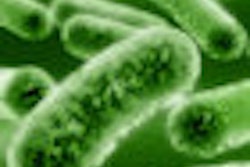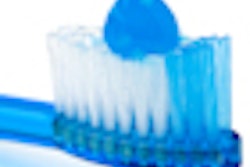
NEW YORK (Reuters Health), Jun 1 - A water-soluble chitosan derivative (Catacidin, Synedgen, Inc.) breaks up plaque-forming bacterial biofilms.
While the current research, reported at the American Society for Microbiology's 110th General Meeting in San Diego, dealt with bacteria involved in oral biofilms (plaque), chitosan derivatives will likely have broader application, such as biofilms on indwelling catheters and in wound infections, Dr. Stacy Townsend told Reuters Health.
"We found that concentrations as low as 100 ppm were effective in reducing cohesion of biofilms from mixed bacterial cultures," said Dr. Townsend, senior scientist at Synedgen in Claremont, CA.
She explained that chitosan is a derivative of the biopolymer chitin -- a component of shrimp shells, among other things -- which in Chinese herbal medicine is thought to have antibacterial properties.
Her team's research showed that concentrations of the oral pathogens Streptococcus mutans and S. sanguinis were reduced by 3-logs within an hour by Catacidin at 2 mcg/mL, although higher concentrations were required to kill the commensal bacteria S. salivarius. This indicates, Dr. Townsend said, that it "would have less effect on natural flora while targeting pathogens in the mouth."
Furthermore, mixed biofilms of the three bacteria showed a 2-log reduction at concentrations of 64 mcg/mL, and the treated biofilms accumulated 20% less bacteria.
Therefore, Dr. Townsend and her colleagues wrote in their meeting abstract, "Chitosan derivatives are effective antibacterials that mitigate the formation and facilitate the removal of oral biofilms and plaque."
The chitosan solution is nontoxic, with none of the side effects associated with other oral antibacterial products, such as chlorhexidine, the researcher said.
She theorizes that the derivative interferes with cross-linking, penetrating, and disintegrating preformed biofilms. It is also likely binds to and causes leakage of bacterial cell contents by increasing the permeability of bacterial membranes.
She noted that Synedgen has developed Catacidin into an oral rinse and that it will be tested in phase I trials this year.
By Karla Gale
Last Updated: 2010-05-28 20:03:19 -0400 (Reuters Health)
Copyright © 2010 Reuters Limited. All rights reserved. Republication or redistribution of Reuters content, including by framing or similar means, is expressly prohibited without the prior written consent of Reuters. Reuters shall not be liable for any errors or delays in the content, or for any actions taken in reliance thereon. Reuters and the Reuters sphere logo are registered trademarks and trademarks of the Reuters group of companies around the world.



















